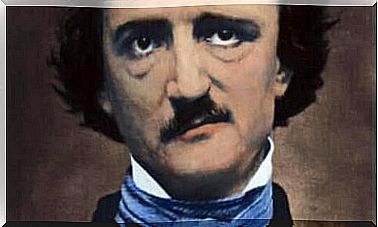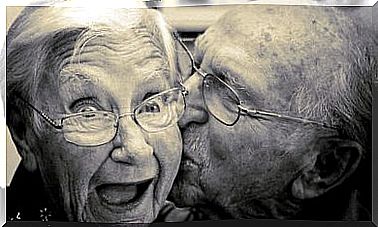The Eysenck Model: The Personality Profile Of A Criminal
The Eysenck model is one of the most important studies on personality that has ever been performed. You will see that this model provides a very broad view of what really defines personality.
Crime was (and is) one of the biggest unknown factors in humans that we have tried to explain. Sometimes we succeed, and other times we do not come up with good answers. But one of the places we have gone the furthest into is how it relates to personality. Therefore, today we will focus on explaining the Eysenck model to a criminal personality.
The Greek origin of theories of personality
Most theories of personality have their roots in Greek philosophy. One of the most important characters people have used as a reference point is Hippocrates. He developed his theory of the four temperaments based on Empedocles’ theory of the four elements.
Empedocles believed that everything in nature consisted of four basic elements: air, earth, fire and water. From there, Hippocrates connected these four elements to the fluids in our body. He believed that there were four liquids that had specific properties, and a person’s temperament depends on which ones they had more of.
The Eysenck model for personality
What makes the Eysenck model so important are the properties of which it is built : it is dispositional, hierarchical, dimensional and psychobiological. And they are all interconnected.
Dispositional
It is said that the model Eysenck came up with is dispositional, since “psychological characteristics” play a central role in his theory. To put it simply, a move or disposition is the tendency you have to act in a similar way in similar situations.
That is, there is a certain type of inertia in you that comes from your specific personal characteristics. And it causes you to always behave in the same way in response to similar stimuli. Thus, there is a relationship between behavior and situations.
Hierarchical
The Eysenck model proposes a pyramid structure for how we create our personalities. This means that it starts with the most specific blocks, and goes down to the widest and most general:
- Specific response : your response to a specific context or situation.
- Habitual response : in similar situations you always give the same specific response. This means that a group of specific responses that you always give in the same context constitute your usual response.
- Attribute : the group of common responses you give in different contexts constitutes a attribute. In other words, you tend to behave in a similar way in a particular context.
- Dimension : several properties are contracted under a much broader concept, a dimension.
Dimensional
In the Eysenck model, there are three main goals: extroversion, neuroticism and psychoticism. These three come together to form a particular personality type. They also give shape to a three-dimensional space where everyone fits in, depending on how much of each of these dimensions they have in their personality.

In this model, personality is the outcome of the combination of these three dimensions. In itself, each dimension has its own two-dimensional plan. That means they all have contradictions.
- Extroversion (against introversion) : An extrovert is a social, lively, dominant person who is always looking for new experiences. On the other hand, an introverted person is reserved, distanced, etc.
- Neuroticism (against stability) : Neuroticism has to do with unstable moods. This is related to how likely it is for a person to suffer from mood disorders. What stands out here are feelings of guilt, anxiety, low self-esteem, being emotional, etc.
- Psychoticism : This is a two-way response: whether you have it or not. Those who have it are usually cold, impersonal, aggressive, antisocial and not very empathetic.
Psychobiological
Now, for each dimension there is also a specific physiological and hormonal structure. These structures also vary differently depending on the dimension they are related to.
- Extroversion : This goes hand in hand with your ascending reticular activation system (ARAS), based on activating or inhibiting your internal cortical systems. Therefore, someone with a high degree of extroversion has a strong, internal cortical inhibition. That is, they have trouble seeing things as risk, which leads to external, unhindered behavior.
- Neuroticism : This dimension accompanies activity in your limbic system (connected to the autonomic nervous system or ANS). Its job is to regulate your emotions. It also consists of brain structures such as the amygdala and hippocampus. A high degree of neuroticism means a lot of limbic activity. This in turn means that your emotions flare up faster and take longer to go away.
- Psychoticism : This is the least developed dimension, and it is not yet associated with a physiological system. But there is a kind of relationship between it and serotonin production.
Criminal personality and the Eysenck model
To explain criminal personality using this model, you must have understood “crime”. A crime involves taking on certain dangers and extreme behaviors, such as lack of concern for the well-being and property of others. That is why, according to the Eysenck model, this is the combination that constitutes a criminal personality :
- First, there is a high degree of extroversion. Courage and lack of concern (basic features of extroversion) are two main elements in committing a crime. To be honest, you have to be brave enough to rob a store, for example.
- Second, a criminal is also defined as having low levels of neuroticism. Their limbic system does not switch on so quickly when it receives stimuli. It has a very specific result the moment they think about committing a crime. This means that they will not look at the future consequences of their actions. In addition, stimuli do not activate ANS ‘sympathetic nervous system. It will stop them from feeling guilty and regret what they did at a later date.
- Finally, someone who has committed a crime will have a high degree of psychoticism. This means that they do not feel empathy and are worried about what they have done.
The Eysenck model provides general explanations for a wide range of different personalities. It all depends on the combinations. After all, there is no fixed “quantity” for everyone. Instead, everyone falls somewhere along a spectrum (except psychoticism).

There are many other theories that have come out since. But Eysenck’s research, especially in its use in the criminal world, was a great innovation. It helped explain why people commit crimes from a psychological personality perspective.








